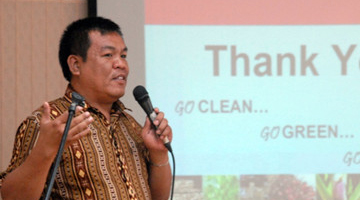 In Cagayan Valley, selected marginal lands may be allocated for biofuel feedstock production.
In Cagayan Valley, selected marginal lands may be allocated for biofuel feedstock production.
This was reported by Dr. Artemio Martin of the Isabela State University (ISU) during a seminar held recently at the Philippine Council for Agriculture, Aquatic and Natural Resources Research and Development.
Feedstock refers to a material that can be used to make biofuels. Some examples of feedstocks are sweet sorghum, sugarcane, and cassava.
Dr. Martin’s study, “Characterization and suitability evaluation of major agricultural soils towards rational land use allocation for biofuel”, aimed to identify sites considered prime agricultural lands for food and feed production and delineate marginal lands that may be allocated for biofuel feedstock growing in Cagayan Valley.
The study used characterization and suitability assessment of agricultural soils.
Results showed that Cagayan Valley has enough land area to produce the desirable volume of food and feed for the next 40 years.
Specifically, the study established that there are 431,044 hectares of marginal lands in the area with high to moderate suitability for growing cassava, coconut, jatropha, oil palm, sweet sorghum, sugarcane, and switch grass.
The productivity of the identified marginal areas were limited by shallow rooting depth, steep to very steep slopes, acidity and low inherent fertility, surface run-off, and drainage conditions of the soils. To enhance productivity of these areas, soil management and improvement has to be done.
The study recommends that planners consider allocating the marginal areas for biofuel feedstock production to support the country’s need for renewable energy.
Also, selected biofuel feedstocks may be grown in moderately suitable areas which will improve the productivity and earning capacity of farmers.
